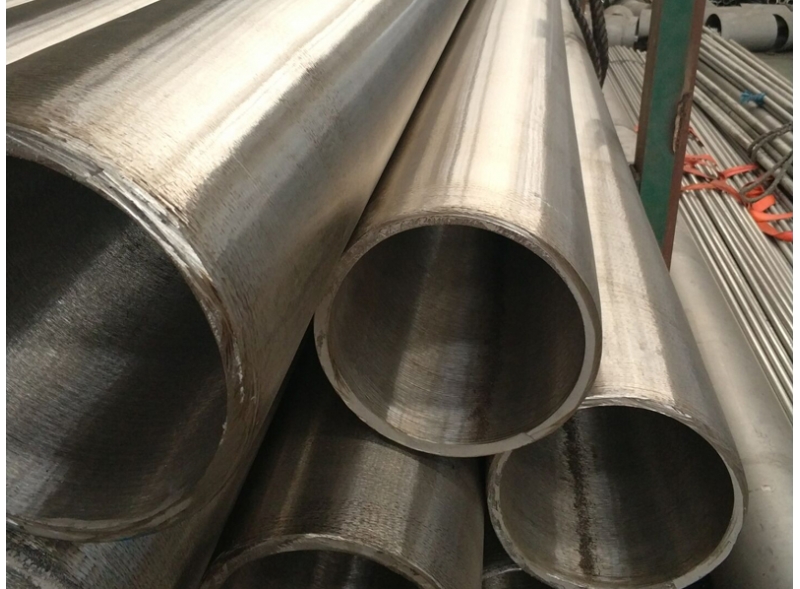Seamless Stainless Steel Tubing - Strength and Precision
Seamless Stainless Steel Tubing plays a vital role in modern industries that demand reliability, durability, and precision. From chemical processing and power generation to automotive and medical applications, these tubes are known for their exceptional strength and corrosion resistance. Unlike welded tubing, seamless tubes are produced without a seam or joint, providing superior structural integrity and a smooth interior surface. This unique construction allows them to withstand high pressure, extreme temperatures, and corrosive environments, making them a preferred choice for critical applications.
Understanding Seamless Stainless Steel Tubing
Seamless stainless steel tubing is manufactured through an extrusion or rotary piercing process that involves shaping a solid billet of steel into a hollow tube without welding. This method results in a continuous, uniform structure that offers consistent performance under demanding conditions. The absence of a weld seam eliminates weak points, allowing for higher pressure ratings and better mechanical properties. The tubes can be produced in various grades of stainless steel, such as 304, 316, and 321, depending on the required level of corrosion resistance and mechanical strength.
Manufacturing Process
The production of seamless stainless steel tubing begins with the selection of high-quality stainless steel billets. These billets are heated and pierced to create a hollow shell, which is then elongated and reduced in size through processes such as extrusion, pilgering, or drawing. During these steps, the tubing is shaped to precise dimensions and subjected to heat treatment to enhance strength and flexibility. The surface is then polished or pickled to remove impurities and improve finish quality. The final product undergoes rigorous inspection and testing to ensure it meets international standards for dimensional accuracy, tensile strength, and corrosion resistance.
Applications in Diverse Industries
The versatility of seamless stainless steel tubing allows it to be used across a wide range of industries. In the oil and gas sector, these tubes are employed for pipelines, heat exchangers, and hydraulic lines that must endure high pressure and corrosive fluids. The chemical and petrochemical industries use them for transporting acids, gases, and solvents safely. In the automotive and aerospace sectors, seamless tubing is used for fuel lines, exhaust systems, and hydraulic applications due to its strength and heat resistance. The medical industry also relies on precision tubing for surgical instruments, needles, and implants, where cleanliness and reliability are paramount.
Advantages of Seamless Stainless Steel Tubing
Seamless stainless steel tubing offers several advantages over welded alternatives. Its uniform structure ensures better resistance to pressure, vibration, and corrosion. The smooth internal surface minimizes friction and allows for efficient fluid or gas flow, reducing the risk of contamination or buildup. These tubes maintain their integrity under high stress, making them ideal for applications requiring long-term performance in harsh environments. Additionally, seamless tubing offers excellent machinability and weldability when fabrication or assembly is required.
Quality and Standards
Reputable manufacturers adhere to international standards such as ASTM, ASME, and ISO to ensure consistent quality and performance. Tubes are tested for dimensional accuracy, chemical composition, tensile strength, and surface finish. Non-destructive testing methods like ultrasonic or eddy current inspection help detect any internal defects, ensuring that only flawless tubing reaches the customer. These stringent quality checks guarantee that seamless stainless steel tubing meets the highest levels of safety and reliability for industrial applications.
Conclusion
Seamless stainless steel tubing combines strength, precision, and durability, making it an indispensable component in industries that demand superior performance. Its seamless construction provides unmatched resistance to corrosion and pressure, while its smooth surface ensures optimal fluid flow. With applications spanning from energy and chemical processing to aerospace and medical equipment, seamless stainless steel tubing continues to be the preferred choice for engineers and manufacturers worldwide. Its combination of functionality, reliability, and longevity makes it a cornerstone of modern industrial infrastructure and innovation.








